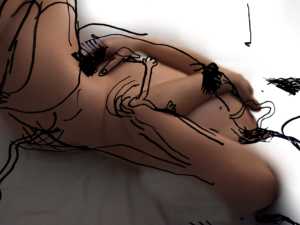What olympic sport would you participate in?
Kari: Our favorite olympic sport is cross country skiing. There’s a special feeling when the skiers are about to cross the finish line with frozen drool all over their face, and we tried to express this in musical form in our single Olympic Sweat. It’s a sexy sport, and of course it makes it more exciting because Norwegians win all the time.
How was the situation this year for you – did you feel a kind of pressure on you to create or did the motivation came by itself?
Katrín: Luckily a lot of the creative writing process was already done when the pandemic hit and we managed to use the time between waves to make visual content and promotion. We are both really hard working and neither of us wants to be a freeloader, so when one person does a lot of work, the other person automatically strives to keep up and that way we keep the ball in the air.
Where are you right now and do you have any plans for the near future?
Kari: Right now we are both in Iceland, where we just played on national TV to celebrate the release of the album. We will record our second album in January in a cabin in the Norwegian mountains, which we are very much looking forward to. And we will also do a lot of cross country skiing of course.
How can we support smaller artists right now best?
Katrín: Buy merch or digital albums. Also there was one fan who recently transferred 100 euros into our bank account and told us to treat ourselves to something nice. That was lovely and we had a fancy celebratory dinner for that money when the album was released. Of course a lot of people don’t have excess money these days, then you can have your favourite albums on repeat on mute on streaming services, that’s both good for the algorithm and it gives the artists streaming income. One fan recently opened a fan account on Instagram for us where she posts memes and drawings etc, which is heartwarming, we really appreciate all the love people are showing us.



